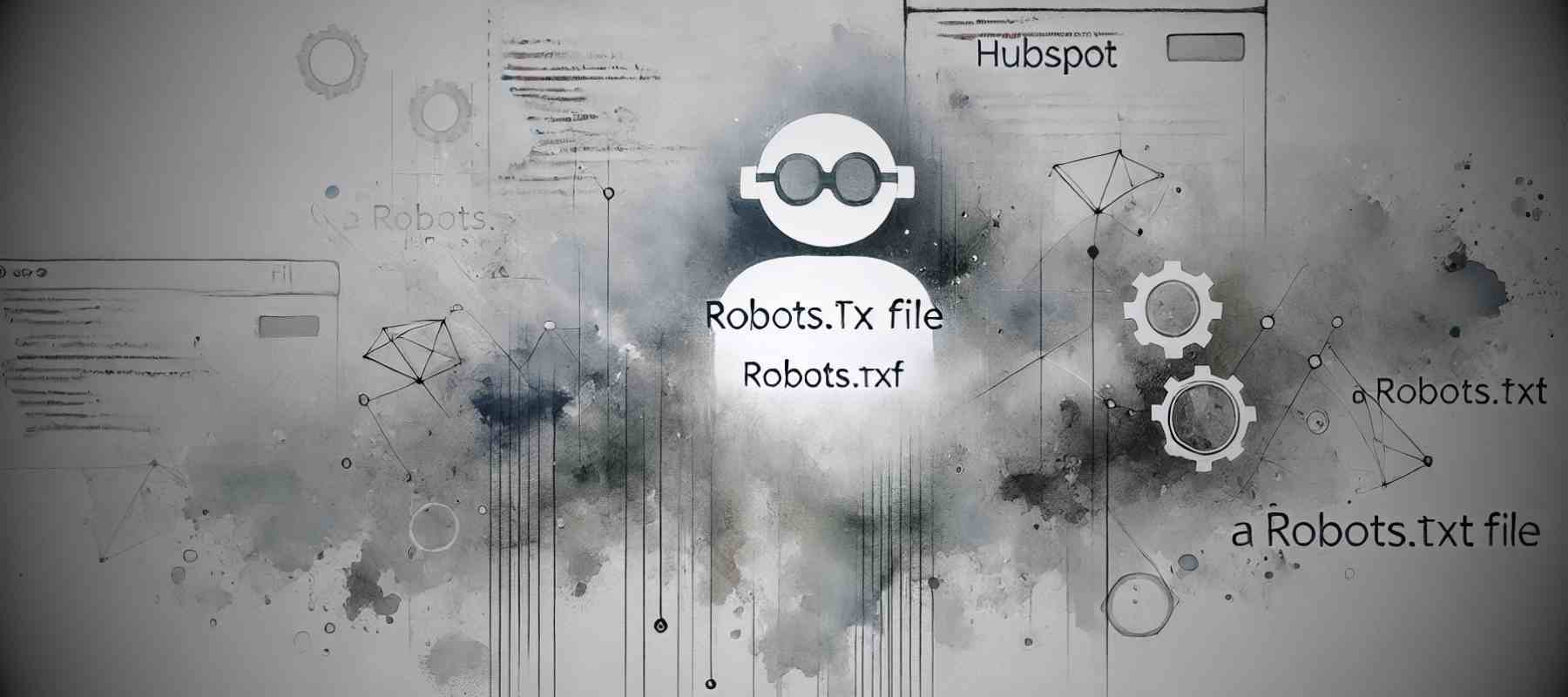
When it comes to managing your website’s SEO, one of the essential files you'll encounter is the robots.txt file. This file guides search engine crawlers on which pages or sections of your site they should or shouldn't access. This guide is meant for you, if you're searching for:
“edit robots.txt in HubSpot”
“HubSpot SEO settings”
“block bots HubSpot”
TLDR: To edit your robots.txt file in HubSpot, go to Settings > Website > Pages > SEO & Crawlers. Scroll to the Robots.txt section, make your changes, and click Save. This lets you control how search engines crawl your site.
How to Edit Robots.txt - A HubSpot Tutorial Guide
If you're using HubSpot, editing the robots.txt file is straightforward, but it’s crucial to do it correctly to avoid negatively impacting your site’s SEO.
What is Robots.txt?
The robots.txt file is a simple text file located in the root directory of your website. It gives instructions to search engine bots about which pages they can or cannot crawl. For instance, you might want to prevent bots from indexing duplicate pages, admin areas, or specific content that isn't necessary for search engines.
Top Reasons to Customize Your Robots.txt in HubSpot
There are several reasons why you might need to edit your robots.txt file in HubSpot:
- SEO Optimization: Ensure that search engines are only indexing the most relevant content.
- Prevent Indexing of Sensitive Pages: Keep pages like login forms or internal documents out of search results.
- Control Crawling Frequency: Manage how often bots crawl your site, which can affect your server's performance.

"How to Edit Robots.txt in HubSpot (Step-by-Step Guide)
Follow these simple steps to edit your robots.txt file in HubSpot:
- Access Your HubSpot Account: Log in to your HubSpot account and navigate to the settings icon in the main navigation bar.
- Navigate to Content Settings: In the left sidebar menu, select Content > Pages. This will bring you to the general settings for your pages.
- Locate the SEO Tools: Scroll down and find the SEO & Crawlers section. This is where you can access and edit your robots.txt file.
- Edit the Robots.txt File: Click on Edit robots.txt to open the file. You’ll see the existing rules and can add new lines to allow or disallow certain pages from being crawled.
✅ To Allow All Crawlers Full Access
User-agent: *
Disallow:- User-agent: * — Targets all search engine bots (Googlebot, Bingbot, etc.).
- Disallow: — With nothing after it, this tells crawlers not to block anything. All pages are crawlable.
🚫 To Block Specific Pages or Directories
User-agent: *
Disallow: /members/
Disallow: /wp-admin/
Disallow: /logs/- Disallow: /members/ — Blocks bots from accessing anything inside the
/members/directory. - Disallow: /wp-admin/ — Prevents crawling of the WordPress admin area.
- Disallow: /logs/ — Stops bots from indexing log-related content.
🔒 To Block a Specific Bot (e.g., Internet Archive)
User-agent: ia_archiver
Disallow: /- User-agent: ia_archiver — Targets the crawler used by the Internet Archive (Wayback Machine).
- Disallow: / — Blocks this bot from accessing your entire website.
🎯 To Only Allow Googlebot
User-agent: Googlebot
Disallow:
User-agent: *
Disallow: /- User-agent: Googlebot — Allows Googlebot full access by not blocking anything.
- User-agent: * with Disallow: / — Blocks all other bots from crawling any content.
🧾 To Block Specific File Types (e.g., PDFs and DOCs)
User-agent: *
Disallow: /*.pdf$
Disallow: /*.doc$- Disallow: /*.pdf$ — Blocks all URLs ending in
.pdf. - Disallow: /*.doc$ — Blocks all URLs ending in
.doc. - Note: The
$symbol ensures the match occurs at the end of the URL.
Save Your Changes: After making the necessary edits, click Save. Your changes will take effect immediately.
Best Practice: Always back up your current robots.txt before making changes, especially if you're unfamiliar with SEO rules.
- Be Cautious: Incorrectly editing your robots.txt can block critical parts of your site from search engines, harming your SEO. Read up the official documentation from HubSpot.
- Test Your Changes: Use tools like Google Search Console’s robots.txt tester to ensure your changes are working as expected.
- Keep It Simple: Only include essential directives in your robots.txt to avoid confusion.
- Improve SEO with Robots.txt in HubSpot
Editing the robots.txt file in HubSpot is a vital step in managing your website’s SEO and ensuring that search engines focus on the most important content. By following the steps outlined above, you can easily edit your robots.txt file, optimize your site’s crawlability, and enhance your overall SEO strategy.
If you're unsure about making changes reach out to our team at ShoutEx.
📚 Frequently Asked Questions
🔍 What is a robots.txt file?
The robots.txt file is a text file placed at the root of your website that tells search engine crawlers which pages or files they can or cannot request from your site.
🛠 How do I edit the robots.txt file in HubSpot?
In HubSpot, go to Settings > Website > Pages > SEO & Crawlers. Scroll to the Robots.txt section, make your changes, and click Save.
🚫 Can I block search engines from specific pages?
Yes. Use the Disallow directive in your robots.txt file followed by the page or directory path you want to block. For example: Disallow: /private-page/.
🎯 Can I allow only Googlebot and block others?
Yes. You can allow Googlebot access while blocking all other crawlers using this configuration:
User-agent: Googlebot
Disallow:
User-agent: *
Disallow: /📄 How do I block file types like PDFs or DOCs?
You can use wildcards in your robots.txt to block file extensions. For example:
Disallow: /*.pdf$
Disallow: /*.doc$.pdf and .doc.HubSpot for Startups